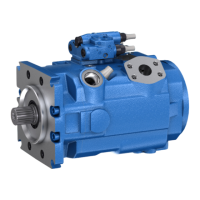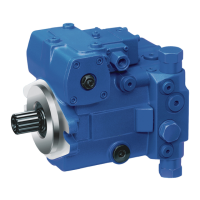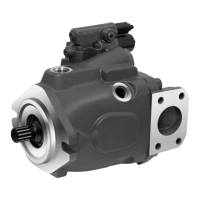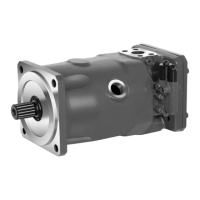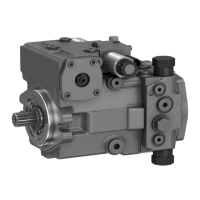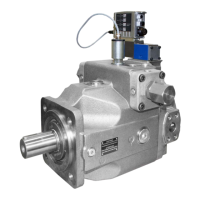46/60 Commissioning
Bosch Rexroth AG, A15VSO/A15VLO Series 11, RE 92801-01-B/11.2018
8.2 Running-in phase
NOTICE
Property damage due toinsufficient viscosity!
Elevated hydraulic fluid temperature may excessively reduce viscosity and damage
the product!
▶ Monitor the operating temperature during the running-in phase, e.g.by
measuring the leakage temperature.
▶ Reduce the loading (pressure, rotational speed) oftheaxial piston unit
ifunacceptable operating temperatures and/or viscosities occur.
▶ Excessively high operating temperatures indicate faults that have tobeanalyzed
and eliminated.
The bearings and sliding surfaces are subject toarunning-in phase. The increased
friction atthestart oftherunning-in phase results inincreased heat development
which decreases over time. Volumetric and mechanical-hydraulic efficiency isalso
greater until the running-in phase ofabout 10operating hours isconcluded.
To ensure that contamination inthe hydraulic system does not damage the axial
piston unit, BoschRexroth recommends the following after the running-in phase:
▶ After the running-in phase, have ahydraulic fluid sample analyzed for the required
cleanliness level.
▶ Change the hydraulic fluid iftherequired cleanliness level isnot reached. If
alaboratory test isnot carried out after the running-in phase, itisrecommended
tochange the hydraulic fluid.
8.3 Recommissioning after standstill
Depending onthe installation conditions and ambient conditions, changes may occur
inthe hydraulic system which make recommissioning necessary.
The following criteria may make recommissioning necessary:
• Air and/or water inthe hydraulic system
• Old hydraulic fluid
• Other contamination
▶ Before recommissioning, proceed asdescribed inchapter8.1 "Initial
commissioning" onpage43.

